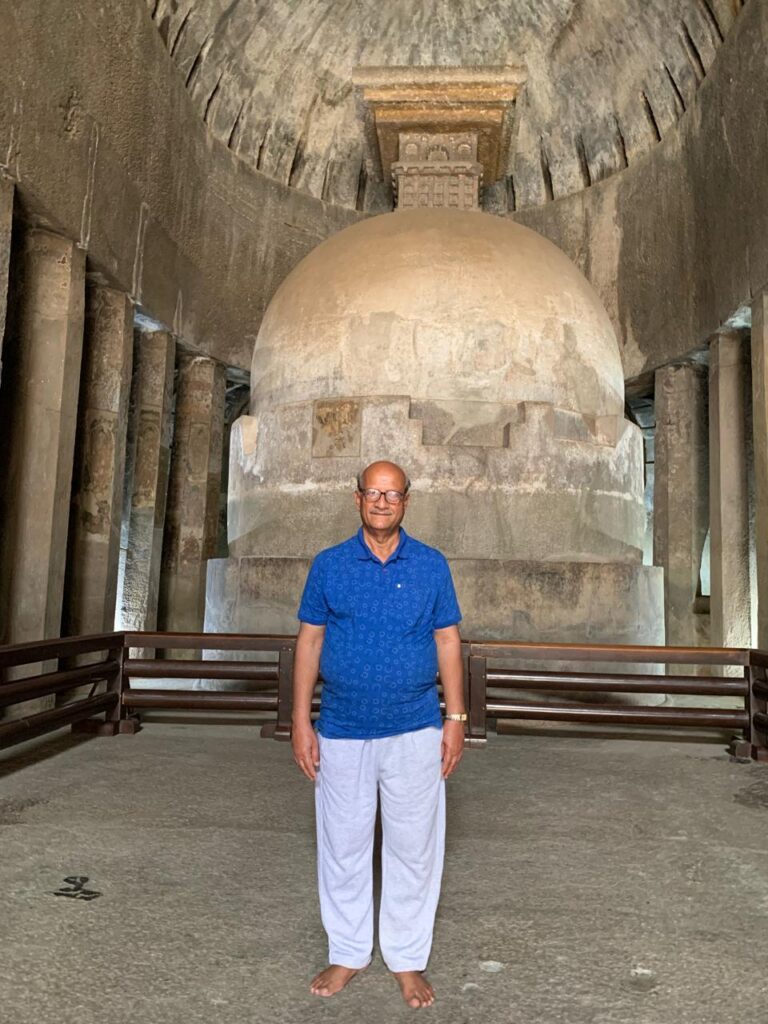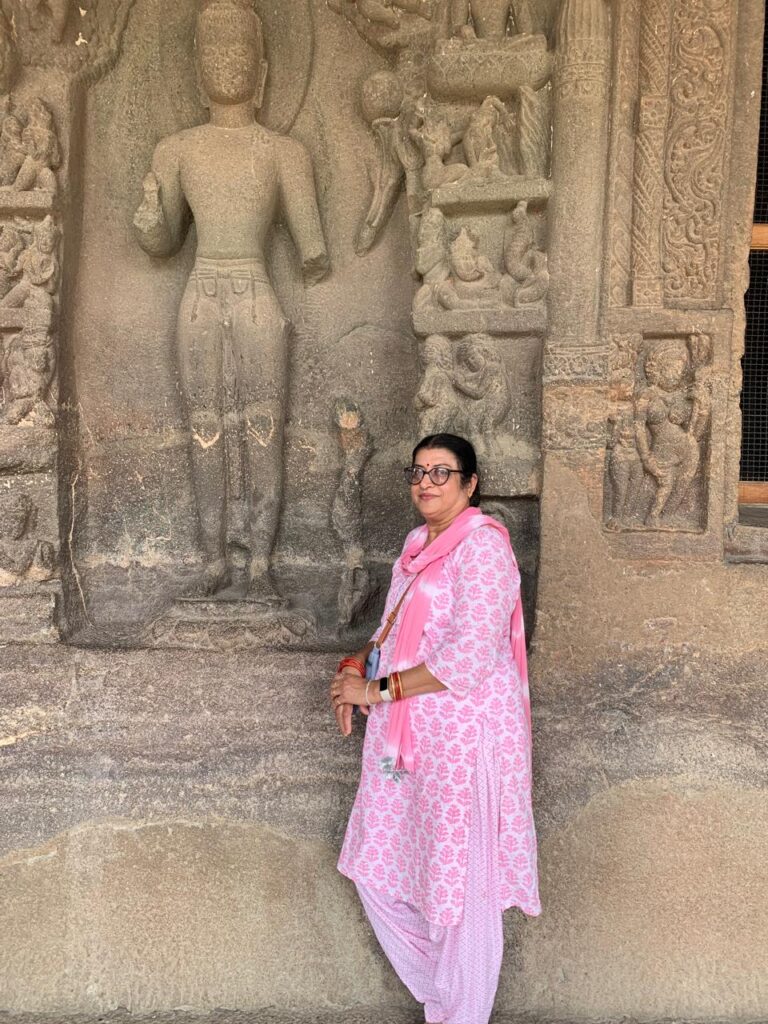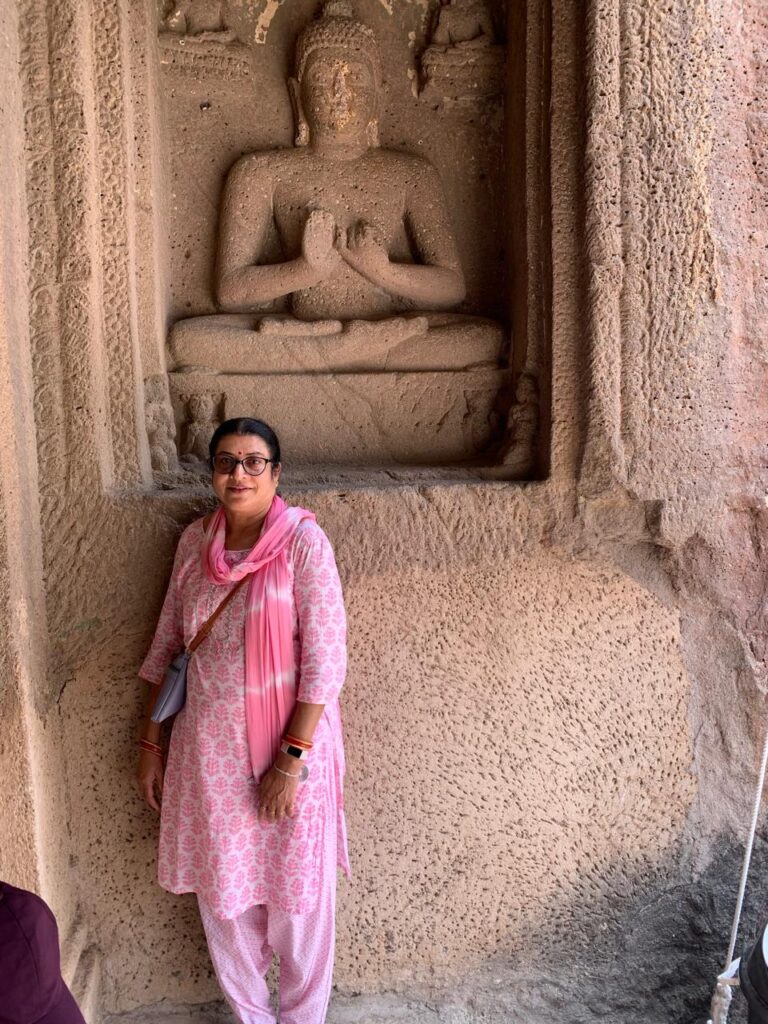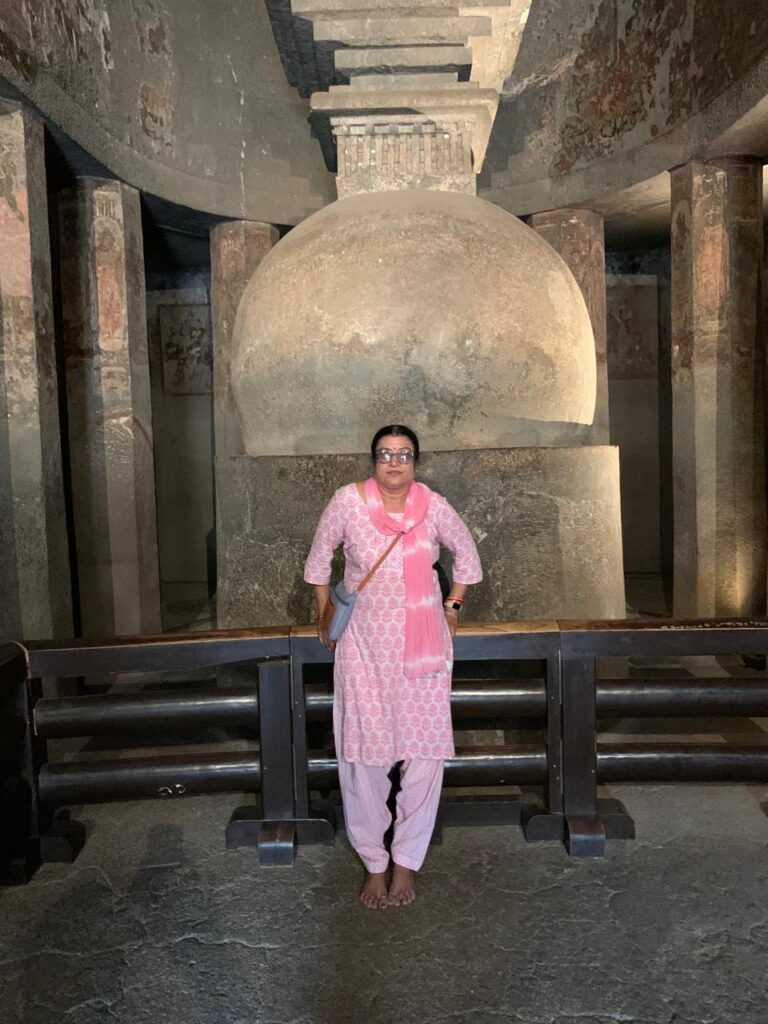
Unveiling the Ancient Masterpieces: My Visit to the Ajanta Caves
By Lokanath Mishra
On 29th March 2025, I had the privilege of visiting the renowned Ajanta Caves, a World Heritage Site located in the Aurangabad district of Maharashtra . As I stepped into the Ajanta Cave, I was struck by the breathtaking beauty and historical significance of this ancient Buddhist monument.

The Ajanta Caves, comprising 30 rock-cut Buddhist cave monuments, date back to the second century BCE to around 480 CE. These caves are a testament to the artistic and architectural prowess of ancient Indian civilization. The Ajanta Cave, in particular, is a masterpiece of Buddhist art, featuring intricate paintings and rock-cut sculptures that are considered among the finest surviving examples of ancient Indian art.

As I explored the cave, I was mesmerized by the vivid colors and mural wall paintings that adorned the walls. The paintings depicted the past lives and rebirths of the Buddha, as well as pictorial tales from Aryasura’s Jatakamala. The rock-cut sculptures of Buddhist deities added to the cave’s splendor, showcasing the exceptional craftsmanship of ancient Indian artisans.
The Ajanta Caves, served as ancient monasteries and worship-halls for different Buddhist traditions. These caves were carved into a 75-meter wall of rock, presenting a breathtaking panorama of ancient Indian art and architecture.

As I delved deeper into the cave, I discovered the historical significance of the Ajanta Caves. These caves were mentioned in the memoirs of medieval-era Chinese Buddhist travelers and were accidentally “discovered” by Captain John Smith in 1819. The caves have since been restored and preserved, providing a glimpse into ancient Indian history and culture.
My visit to the Ajanta Caves, was a truly enriching experience. The ancient masterpieces that adorn the walls of these caves are a testament to the artistic and cultural heritage of India. As I left the cave, I felt grateful for the opportunity to experience this piece of history, and I couldn’t help but feel a sense of awe and reverence for the ancient Indian civilization that created these breathtaking works of art.
Unveiling the Rich History of the Ajanta Caves:
As I delved deeper into the Ajanta Caves, I discovered a rich history that spanned centuries. The caves, a UNESCO World Heritage Site, are a testament to the artistic and architectural prowess of ancient Indian civilization.
The earliest caves at Ajanta date back to the 2nd century BCE, during the Hinayana phase of Buddhism. However, it was during the reign of Emperor Harishena of the Vakataka dynasty in the 5th century CE that the caves underwent a major transformation. This period saw the construction of some of the most elaborate caves, including the famous Cave 1 and Cave 16.
The second phase of construction at Ajanta corresponds to the very apogee of Classical India, or India’s golden age. Despite the weakening of the Gupta Empire, the Vakatakas were one of the most powerful empires in India at that time.
The Ajanta Caves were abandoned after the death of Harishena, but they continued to be used for a period of time. The caves were later mentioned in the memoirs of 7th-century Chinese traveler Xuanzang and scattered medieval graffiti.
The caves were rediscovered in 1819 by British officer John Smith, who deliberately damaged an image on the wall by scratching his name and the date over the painting of a bodhisattva. The caves became famous for their exotic setting, impressive architecture, and exceptional paintings.
During the colonial era, the Ajanta site was in the territory of the princely state of Hyderabad, and it was not until the early 1920s that the site was restored and converted into a museum. However, early mismanagement and neglect led to the deterioration of the site.
In recent years, efforts have been made to preserve and protect the Ajanta Caves. The site has been listed among the UNESCO World Heritage Sites of India since 1983, and the Maharashtra Tourism Development Corporation has announced plans to add replicas of the caves to reduce crowding and enable visitors to better appreciate the paintings.
As I left the Ajanta Caves, I felt a deep sense of respect for the ancient Indian civilization that created these breathtaking works of art. The rich history of the caves is a testament to the power of human creativity and the importance of preserving our cultural heritage.

